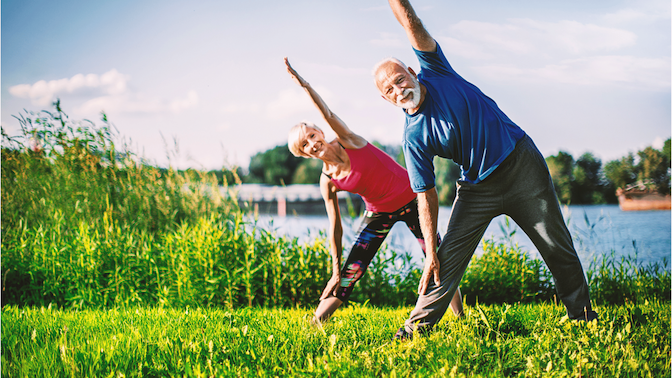Today, it is not uncommon to hear about concussions in football players and athletes and the resulting traumatic brain injuries. But you may be surprised to learn that falls are the most common cause of traumatic brain injuries. And as we age, the risk of having a serious injury from a fall grows dramatically.
According to the Centers for Disease Control, one in four older adults fall each year. One in five of these falls result in a serious injury.
Why Does Fall Risk Increase with Age?
The increase in fall risk is due to various intrinsic factors, such as poor vision, balance problems, muscle weakness, and extrinsic factors, such as dim lighting and slippery surfaces.
“Despite the increased risk of falls with age, there may be active older Central Oregonians who have better balance than a 40-year-old,” said Ron Carpenter.
Ron states that a lack of fitness can create significant problems with balance as the entire system becomes less efficient and weak. A double whammy of sorts, COVID has caused many normally active people to become more sedentary as a survival tactic of sorts – avoiding gyms, public pools, and even heavily populated trails. However, this tactic is putting more people at risk of injury. Thankfully, improvements in balance and proprioception can increase quickly with practice.
A physical therapist like Ron can help screen if a more significant issue is causing the balance problems. Ron uses two tests to assess balance and fall risk: single leg balance and tandem gait. He says that while these tests are used in the clinic as a screening, they are perfect for helping a person improve their balance when practiced in a safe location (like a hallway) at home. Ideally, you should be able to stand on one foot for 10-15 seconds and tandem walk (where you walk in a straight line with the toes of the back foot touching heel of the front foot) for ten steps.
Other tips to prevent those at higher risk for a fall include:
- Picking up around the house.
- Installing grab bars in the bathroom.
- Getting your vision checked.
Ron also recommends practicing tai chi and yoga. Tai chi, in particular, has been shown to reduce falls in seniors by up to 45%. Both tai chi and yoga improve balance by strengthening the muscles that help keep you upright. The slow-moving exercises improve leg strength, range of motion, flexibility and can improve reflexes too. They are deceivingly harder than they look and are an excellent workout for the mind and the body!
If you are concerned about your balance or age-related decline or have found that you’re avoiding doing specific tasks because of a fear of falling or losing balance, schedule an appointment with a PT such as Ron Carpenter. Your PT will identify any weaknesses or deficiencies and then create a plan to help you get past them. Taking steps today will help your tomorrow feel more secure.
